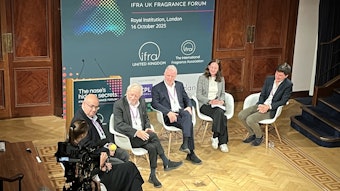
The skin protects the body against external aggression such as changes in temperature, humidity, UV radiation, etc., which are well-known to prematurely age skin. According to this patent application, heat in particular accelerates skin aging by causing inflammatory responses and degrading collagen in the dermis through an increase in collagenases.
In order to avoid or prevent the damage caused by UV, sunscreens generally are used. And while UV filters can effectively protect the skin from UV radiation, they do not prevent the heat induced by said radiation.
In the same way, skin exposed to cold climates tends to redden and generate inflammation. And while the application of moisturizing creams can relieve these symptoms post-exposure, this does not prevent the damage in advance. This Chanel patent application therefore focuses on compositions to improve the thermal comfort of skin, to form a protective barrier layer in hot, wet, cold and/or dry climates.
Thermal-protective cosmetic powder
WIPO Patent Application WO/2017/089701
Publication date: June 1, 2017
Assignee: Chanel Parfums Beauty
It is believed that the human comfort zone is at the standard temperature condition of about 20°C and relative humidity of about 50%. Thus, disclosed herein is a composition including at least one powder having a low thermal conductivity, i.e., less than or equal to 2 Wm-1/K-1, to improve thermal comfort beyond these parameters.
Previous inventions have attempted to address this challenge using materials capable of phase changes (solid/liquid) according to external temperature conditions. Here, as the temperature increases, the material absorbs heat and passes to the liquid state, then as the temperature decreases again, the material releases the stored heat and returns to the solid state, thus protecting the skin from temperature changes.
However, there remains a need for a simpler technical solution to better protect skin from variations in temperature. This invention proposes a powder having the thermal conductivity specified above and comprising cellulose, mica, talc, silica, alumina or aluminum silicates, among others (see full patent disclosure, in French).










